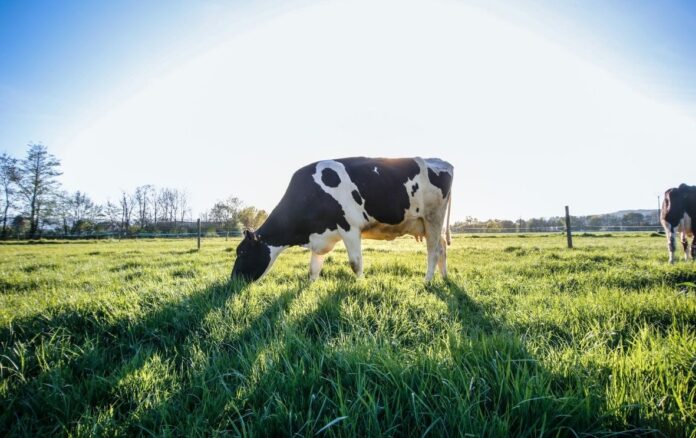Preventing hoof damage through the management of the environment and cows and instituting an effective hoof care programme are the key ways of preventing lameness in dairy herds.
Teagasc has provided advice on reducing lameness in Irish dairy herds with 17 actions for farmers in a new publication that it released in recent days.
Preventing lameness
Firstly, it looks at preventing hoof damage through the management of the environment.
- Firstly, carry out a lameness risk assessment on your farm. Take a look at your farm infrastructure to identify areas for improvement. Seek advice on your farm infrastructure from your advisor, vet and hoof trimmer;
- Improve the quality of surfaces on roadways and yards, especially turns and sharp bends. Concrete should be non-slip and free of rough ridges and stones.
- Ensure animals have sufficient space in collecting yards (1.5 m2 /cow), on roadways and in housing. Allow a minimum of 0.6 m feed barrier space per cow (7 cows per 15 ft span);
- Reduce standing times for animals by having an adequate number of correctly-sized, comfortable cubicles (1.1 cubicles per cow) and by minimizing time spent standing in collecting yards. Lying on bare concrete can injure the limbs. Use mattresses or mats to keep cows comfortable and injury-free and to promote lying;
- Identity and rectify problems with cow flow. You can use rubber matting in areas where slippery concrete is present to provide grip;
- Give cows a clean, dry environment for walking, indoor and outdoor. Run scrapers as often as it is practical when cows are indoors;
- Introduce first calving heifers to the herd well before calving to reduce fighting with dominant cows and reduce stress on hooves;
- Stress-free reduces pressure during movement and allows animals to move at their own pace Use backing gates to move animals gently. Avoid sticks, shouting, quads or dogs.
- Mind cows post-calving. Keep calved cows close to the parlour for as long as possible (minimum of 48 hours) to allow the pedal bone to settle post-calving. It is best for all cows to walk short distances if possible, but after calving, this is particularly important.
- Choose bulls with a lower genetic susceptibility (i.e. negative PTA) for lameness;
- Ensure cows are in appropriate body condition – minimise body condition loss in the six weeks post-calving.
Hoof care programme
Teagasc advises you to create this in conjunction with your vet, advisor and hoof trimmer.
It will outline the plan for monitoring and treating lameness in your herd.
Key components, the state agency says, are:
- Mobility score regularly to identify lame cows that require treatment/trimming early.
- Treat lame cows early as it is “the key” to recovery. Discuss with your hoof trimmer the feasibility of a standing arrangement where the hoof trimmer visits regularly;
- An appropriately trained person should always carry out hoof timing. A vet and hoof trimmer should always see severely lame cows. Ask your vet for advice in relation to providing pain relief;
- If digital dermatitis is present on your farm, adopt a regular, consistent, all-year-round footbathing programme;
- Carry out routine hoof-trimming (or hoof examination. At a minimum, carry out once a year, possibly at drying off;
- Gradually introducing concentrates is “very” important (2 kg first day and increase @0.75 kg/day);
- Record cases of lameness in your herd. If you do not know what the level of lameness is, you will not be able to monitor improvements. Record the cause of each lameness case with your hoof trimmer’s and vet’s assistance.
Other farming news on That’s Farming:





